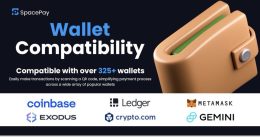Ethereum is poised for a major rally, say many cryptocurrency market analysts. The second largest coin by market cap after Bitcoin, a recent May 14th report in Yahoo Finance said Ethereum among other cryptos “have seen a surge in value this year, driven by recent developments in the financial sector.”
Wall Street and the TradFi (traditional finance) banking sector are hot for cryptocurrencies, and there are pretty much only two that most institutions will touch, and they’re the same two that are most popular with retailers, Bitcoin and Ethereum. Only Ethereum hasn’t had a chance yet to really show off what it’s capable of the way the old Satoshi blockchain has.
When it does, all the meme currency secured by Ethereum that have made remarkable gains in the past few years (gains that take Wall Street’s best stocks a hundred years to deliver investors), may turn out to be undervalued. That means coins like Shiba Inu, Floki, and Pepe Coin, and perhaps new coins in the pipeline like Kai Cat Coin (KAI).
Why Ethereum Is Wall Street’s Next Bitcoin
Bitcoin’s value is basic and simple. It keeps a reliable record of every bit of bitcoin and every transaction that moves each through its vast network of thousands of nodes all across the globe. But it is more or less an arithmetic calculator:
You have this much Bitcoin. Bob spent that much. Carol bought this amount. Alice sold that amount. Ethereum, on the other hand, has the same features you love about Bitcoin and it can do more than add and subtract amounts from accounts. It can compute. So it can do anything your computer can do. It can run a video game program for you. It can host a website.
One does not simply keep count of their money with Ethereum. It is a network that wields artificial intelligence with big disruptions ahead for the fields of finance, insurance, and law. The way Ethereum is going to do this is through smart contracts, like the ones activated to buy, sell, spend, and use Ethereum tokens like Pepe and Kai Cat Coin (in presale) on its network.
The report in Yahoo Finance referenced above says: “Ethereum’s native cryptocurrency, Ether, has witnessed a remarkable rally, driven by the explosive growth of decentralized finance (DeFi) and non-fungible tokens (NFTs).”
“As the backbone of the DeFi ecosystem,” the report continues. “Ethereum continues to attract developers, investors, and users, cementing its position as a fundamental pillar of the cryptocurrency industry.” The authors conclude that mass institutional adoption of Ethereum “represents a pivotal moment in the evolution of finance.”
Check Out KAI Presale
Stay Connected With KAI On Socials: X | Telegram
Ethereum Is About To Be Civilization’s AI Operating System
Bitcoin has proven itself as a capable global reserve currency for final settlement as a digital bearer instrument like gold, meaning there will never be more than 21 million bitcoin and your bitcoin stays your bitcoin as long as you secure your private keys. It’s been online in the open since Jan 3, 2009 and the base layer blockchain has never been hacked. That’s proof.
But Ethereum needs some more time and development to show just how perfectly it can serve the finance, insurance, and law industries. That requires more creative applications of its capabilities by specialists in those industries working with blockchain engineers who know the network’s smart contract language– Solidity.
That’s one reason why ether (ETH) hasn’t yet caught up to bitcoin (BTC) in total market capitalization, holding only 28% of its older peer’s weight by capitalization. Which likely leaves far more upside left in Ethereum prices on crypto exchange markets.
When that tidal wave of institutional adoption comes, meme coin investors expect their bags to do what they usually do during rallies– launch up the price chart like the base tokens, but with multiple times the speed and leverage.
So meme coins like Ethereum Kai Cat Coin, one of 2024’s new cat meme currencies, are financially risky to buy while they’re hot, but altcoin investors like to keep some in the bag at market value prices during bear markets and at presale prices before they hit exchanges.


















